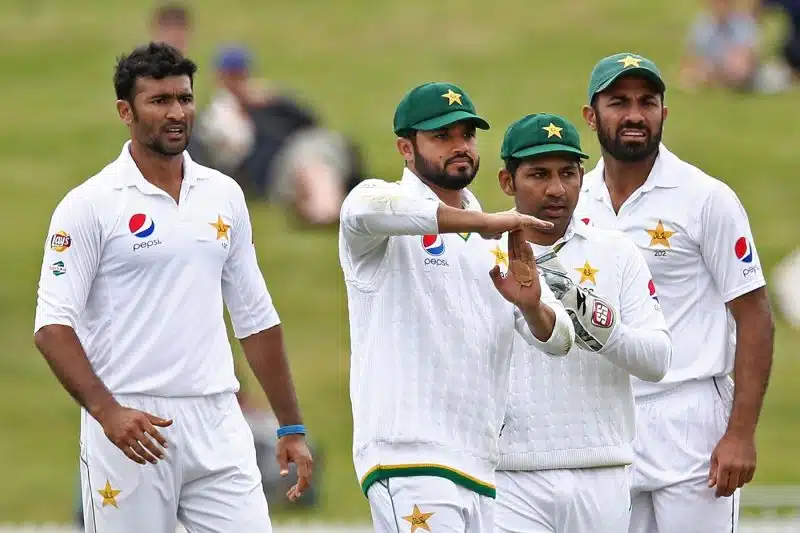
In the fast-moving arena of cricket, where every run counts and every decision can change the course of a game, technology has turned out as an indispensable ally. Among the many creations and innovations that have changed the sport, the Decision Review System, or DRS, stands out as a game-changer. In this extensive guide, we will take a deep look into the world of DRS, unravelling its full form, its impact on the three primary formats of cricket (Test, One Day Internationals, and T20i), its introduction, the role of the DRS timer, and how it works.
The Full Form of DRS in Cricket
Let’s begin with the basics. DRS stands for the “Decision Review System.” It is a technological aid that helps on-field umpires in making more precise decisions during matches. The DRS is used to review judgments related to dismissals, boundaries, and other crucial aspects of the game.
How Many DRS Reviews in Cricket?
In cricket, each team is generally allowed a specific number of DRS reviews during an innings. The number of reviews available varies across formats.
DRS in Test Cricket: In Test cricket, each team is usually allowed two unsuccessful reviews per innings. If a team’s review is successful, they retain the right to make additional reviews.
DRS in One Day Internationals (ODIs): In ODIs, each team is also granted two unsuccessful reviews per innings. Like in Test cricket, if a team’s review is successful, they can make more reviews.
DRS in T20i Cricket: T20i cricket usually follows the same protocol as ODIs and Test cricket, with each team having two unsuccessful reviews per innings.
When Was DRS Introduced in Cricket?
The DRS was officially introduced in international cricket in the year 2008. The aim was to diminish the margin of faults in umpiring decisions and assure fairness in the game. Initially, the system faced skepticism and challenges in its implementation, but over the years, it has appeared and become an integral part of the sport.
The Role of DRS Timer in Cricket
The DRS timer is an important part of the Decision Review System. It acts as a mechanism to assure that reviews are conducted promptly and do not unduly delay the game. Here’s how it works:
- Umpire’s Decision: When an on-field decision is queried by a player or captain, the on-field umpire directs to the third umpire. The timer starts beating from this point.
- Review Request: The fielding captain or the batter facing dismissal must make a precise and certain signal within a defined time, typically 15 seconds, to ask for a review.
- Third Umpire’s Review: Once the review request is made within the specified time, the third umpire starts the process of evaluating the decision. This comprises checking different camera angles and technologies like Hawk-Eye, Hot Spot, and Snickometer to make an exact judgment.
- Time Limit for the Third Umpire: The third umpire is usually given a maximum of two and a half minutes to reach a decision. Yet, this can vary relying on the specific cricket board’s regulations.
- On-Field Decision Stands: If the third umpire cannot find definitive proof to capsize the on-field decision within the time limitation, the original decision made by the on-field umpire affirms.
- Decision Overturned: If the third umpire uncovers adequate evidence to topple the on-field decision, the decision is altered accordingly.
How DRS Works in Cricket
Now that we understand the role of the DRS timer, let’s delve into how the Decision Review System works:
- Player/Captain’s Challenge: A cricketer or the captain of the fielding team can question the on-field umpire’s decision. To begin a review, they must make a “T” sign with their arms, signalling the formation of a television screen. This means their demand for a review.
- Review Request Sent to Third Umpire: The on-field umpire then communicates the review request to the third umpire, who initiates the DRS process.
- Technology at Play: The third umpire has key to various technologies to evaluate the decision:
- Hawk-Eye: Used mainly for LBW (Leg Before Wicket) decisions, Hawk-Eye provides an orbit of the ball’s path and forecasts whether it would have hit the stumps.
- Hot Spot: Infrared imaging aids in detecting temperature changes driven by the ball’s impact on bat or pad.
- Snickometer: An audio tool that determines sounds made when the ball skims the bat or pad.
- Communication with On-Field Umpire: The third umpire communicates their decision to the on-field umpire via a two-way radio or communication system. This assures swift decision-making.
- Outcome of the Review: Based on the prove provided by the technology and the third umpire’s assessment, the on-field umpire either keeps the original decision or alters it as per the review outcome.
- Review Status: Teams are informed about the status of their reviews throughout an innings. They receive updates on how many reviews they have left and whether they’ve been successful.
The Decision Review System has immensely influenced the way cricket matches are officiated. It has fetched a level of preciseness and fairness that was once difficult. With the help of cutting-edge technology and the DRS, the cricketing globe continues to aim for more precise decision-making and thrilling matches on the field.
Also, see:
Comprehensive Guide to Cricket Bat Size, Grips, Stickers, and Top Recommendations
